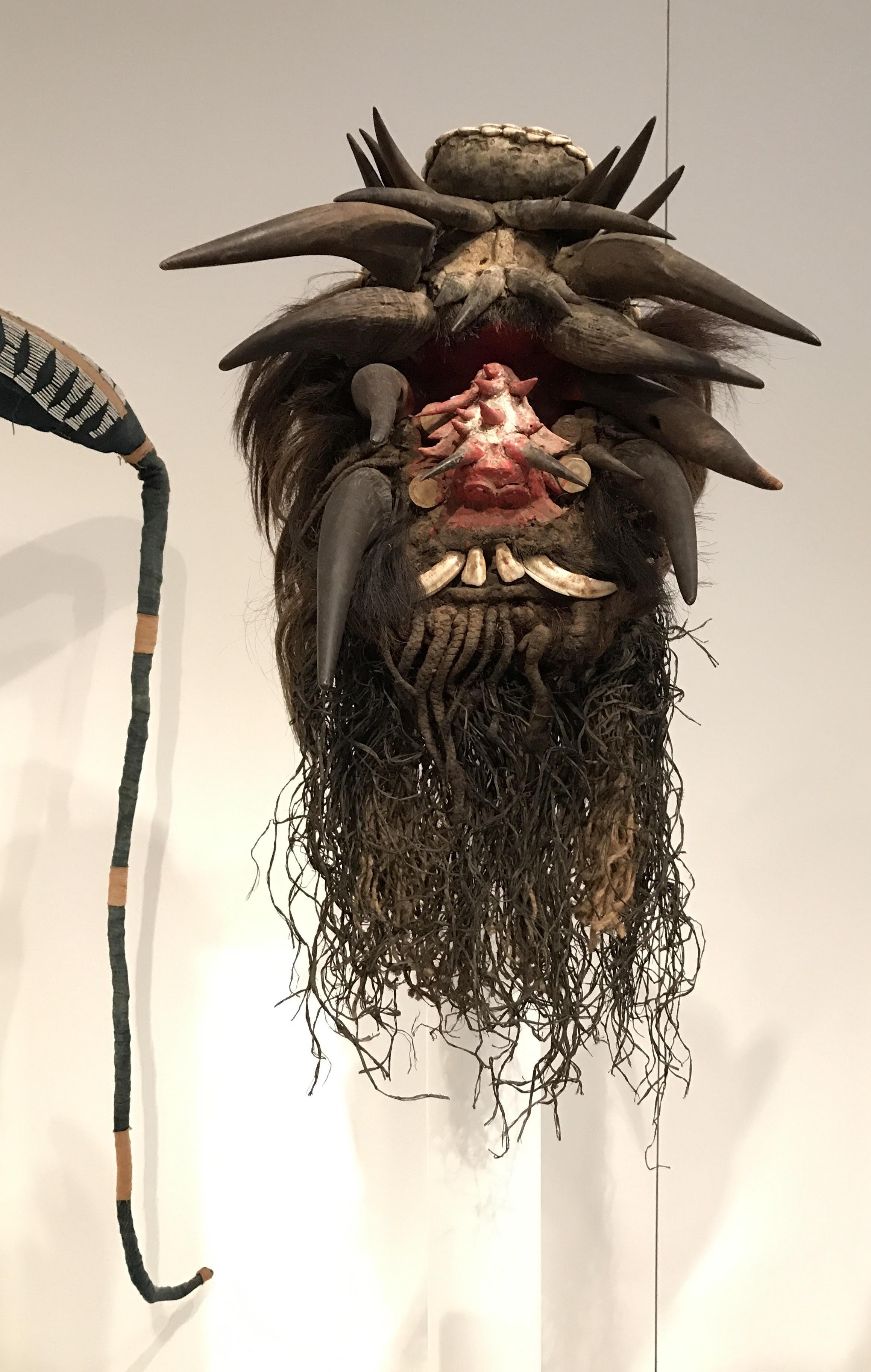
This 20thcentury African mask comes from the Wee people located in regions of Liberia and the Ivory Coast. Pamela McClusky, curator at the Seattle Art Museum, points out that the Wee people look at their environment as a teacher or university. Their disposition is not to change or alter the wilderness but rather learn from it — working with what exists, altering or adapting themselves to their environment. They treat the forest as a sort of moral document, in the same way many Westerners revere the Constitution or Declaration of Independence. This mindset compels the Wee people to create these elaborate masks that allow them to momentarily reflect or take on various animal characteristics.
This particular mask is described by the Wee people as a magnet for all the cobwebs that people weave between one another — the nasty things we do, say and think about one another. When the mask comes out, it absorbs these toxic interactions, returning them to the individual and ultimately back to the forest. This cleanses or purges the human realm from these harmful animal-like instincts that we all possess. In contrast, Western culture has largely seen humans as distinct and set apart from animals and the natural world. The natural environment is something to be used and harnessed to further our goals and aspirations. It is interesting to note that despite differences in how one views the wilderness, most of us can agree that we don’t treat each other as we should.
